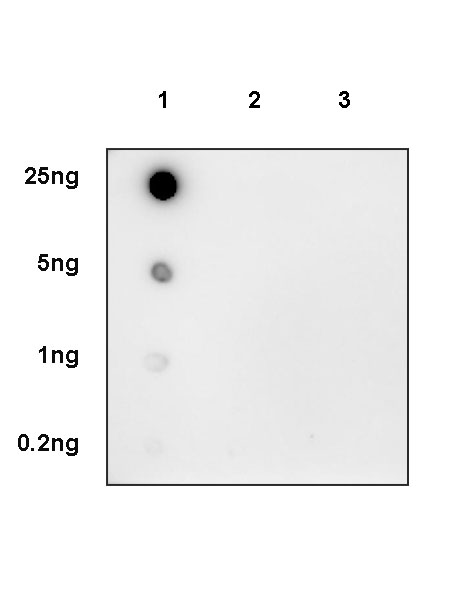PBS pH7.4
12 months from date of receipt / reconstitution, 2 to 8 °C as supplied
| 应用 | 稀释度 |
|---|---|
| Dot Blot | 1:1000 |
The K-ε-GG motif refers to the diglycine remnant left on the lysine residue of a protein after ubiquitination, a form of post-translational modification (PTM). In proteomics research, the analysis of the K-ε-GG motif typically involves the use of specific antibodies to enrich these modified peptides, followed by identification and quantification using mass spectrometry techniques. This analytical approach helps researchers better understand the role of ubiquitination in biological processes and how it changes under disease conditions. Furthermore, antibodies against the K-ε-GG motif are also used in ubiquitination proteomics technology, which combines immunoaffinity enrichment with liquid chromatography-tandem mass spectrometry (LC-MS/MS) for large-scale qualitative and quantitative analysis of ubiquitinated proteins.

Dot blot result of K-ε-GG Rabbit pAb
Lane 1: Modified peptide library ((K-ε-GG)
Lane 2: Modified peptide library ((K-ε-Gv)
Lane 3: Nnmodified peptide library (K)
Primary antibody: K-ε-GG Rabbit pAb at 1/1000 dilution
Secondary antibody: Goat Anti-rabbit IgG, (H+L), HRP conjugated at 1/10000 dilution